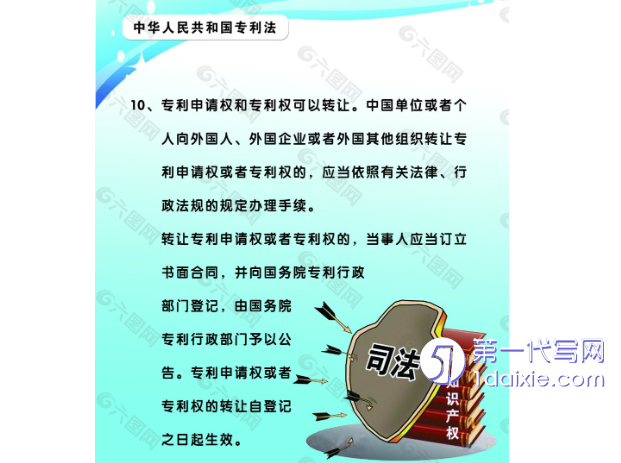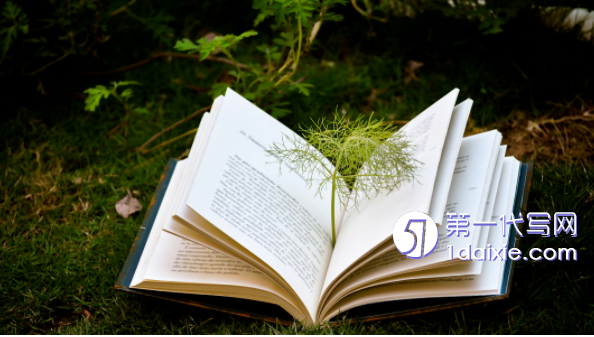本文是一篇英语论文,本文通过查阅美国联邦法律数据库,Westlaw数据库,COCA语料库法律子库和第十一版布莱克法律词典,提出了可供参考的修正译文以及详实的翻译策略。
Chapter OneIntroduction
1.1 Research Background
According to the“International Comparison of PCT Patent Applications bySource Country Statistics”released by China in 2020,relevant countries in the worldhave made a great improvement in the number of patent applications.As one of thetop three countries,China has recorded the most considerable growth of patents,from782 in 2000 to 59,050 in 2019.A key aspect of effective international disseminationof Patent Law of the People’s Republic of China(China’s Patent Law)lies in validC-E translation of it.However,the current C-E translated version of China’s PatentLaw(CEPL),which is uploaded from the official website of the National People’sCongress of the People’s Republic of China[1],does exist translation problems due tolack of systematic translation tactics to guide the translation of such legal documents.
To date,the existing research on legal translation has put forward some generalprinciples,theories,and relevant tactics to solve these translation problems,coveringa wide range of topics,such as terminology translation,court translation,translators’training,cultural influence on legal translation,and so on with given considerableresults(Bobrova,Lebedev,&Pinkovetskaia,2020;Stepanova,2017;Du,2004;Liu,2001;Qu,2017;Zhang,2019).However,infelicities and incongruities still remain inChina’s legal translation.For instance,“城市生活垃圾”is translated as“domesticwastes in cities”,“domestic garbage”,and“daily garbage”,whereas it should betranslated legally as“municipal solid waste”,short for MSW,in native English-speaking countries(Liu,2019).Additionally,considerable studies have beendone on the subjects of Civil Code of the People's Republic of China(Civil Code),Law of the People's Republic of China on Foreign Investment,and Civil ProcedureLaw of the People's Republic of China(Liu,2001;Zhang,2021).However,the studyregarding CEPL has received scarce attention among researchers.

1.2 Research Problems
Technology has become a central issue for each country’s Intangible Assets in thenew global economy.Advanced patents are vital to high technologies.Effectivecommunication in the international patent field is largely decided by a legallyexpressive translation of the legal documents.Recent events concerning patentapplications tell us that it is extremely important to have a better translated PatentLaw.Although the research on poor legal translation is many for us,most arerestricted to Civil Code and other economic laws.We are not yet clear whether thepresent C-E translated version of China’s Patent Law is effective.If not,appropriatetranslation theory and general principles should be proposed to ensure the high qualityof it.
This thesis is designed for the following two aims.Firstly,it attempts to identifythe translation problems of the C-E translated version of China’s Patent Law throughan in-depth analysis of it on the basis of linguistic adaptation theory.Secondly,it aimsto find out the countermeasures against the representative translation problems andassess their feasibility by virtue of linguistic adaptation theory.
Chapter TwoLiterature Review
2.1 Domestic Research on Legal Translation
Legal translation has become a hot topic in translation studies.In recent 10 years,many scholars have focused on it as China is attaching more and more importance toglobal legal communication.To date,domestic scholars have provided a great numberof results,in 2682 academic periodicals,over 200 professional books,and more than2000 dissertations.Significant growth has been seen since 2001,according to CNKIstatistics.Chinese legal translation study can retrospect to the 19th century,in whichLin Tse-Hsu,the politician,philosopher,and poet of the Qing Dynasty,invitedAmerican missionary Parker to translate Switzerland’s International Law into Chinese.And International Law,“万国公法”in Chinese,which William Alexander ParsonsMartin(Chinese name:Ding Weiliang)translated from Elements of International Law,is considered as the first complete practice of legal translation in modern China(He,2014).What’s more,plenty of terms translated from it are still embraced these days,like“政治”,translated from“politics”.
Since China’s reform and opening up,Chinese legal translation has rapidlydeveloped.The existing studies on legal translation are extensive with significantfocuses on translation strategies,translation principles,guiding theories,translationconsistency of legal terms,the features of legal English,the influence of culture,the establishment of legal corpus,and so forth(Du,2004;Li,2021;Liu,2001,2009,2012;Qu,2017;Zhang,2019).Meanwhile,a large number of published studies havedescribed the research findings in regards to Civil Code,Contract Law of the People’sRepublic of China,Civil Procedure Law of the People’s Republic of China,and so on(Fu,2002;Qiu&Chen,2017;Zhang,2021).The literature review for this thesis willbe made from the following three aspects.
2.2 Foreign Research on Legal Translation
Research on legal translation has a long history.For the past 30 years,much moreinformation has become available on these topics,such as optional translation tactics,scientific ways to train translators,more useful research methods withinterdisciplinary combinations,and so on.Publications in foreign media are moreproblem-oriented with multifunctional approaches from more multifariousperspectives.Let’s go through those highly significant studies for this thesis from thefollowing four aspects.
In the first place,thus far,a number of researchers have attempted to examine theguiding function of diverse theories as well.Filipovic and Hijazo-Gascon(2018)putforward that professional practices,together with applied language typology,can improve the translation quality of legal texts in Vial-Vigo International Journal ofApplied Linguistics.Angermeyer(2021)argued that translators or interpreters wereexpected to take pragmatic inequality into account instead of focusing on thetranslation of referential meaning alone in Journal of Pragmatics.In China,there ismore research studying translation from the point of view of Pragmatics,which turnsout to be a relatively satisfactory effect.
Chapter Three Theoretical Framework.................................16
3.1 Linguistic Adaptation Theory.............................................16
3.1.1 Three Key Notions of Choice Making.................................16
3.1.2 Four Angles for Investigating Legal Text.............................17
Chapter Four Major Problems in C-E Translation of China’s Patent Law....................21
4.1 Infelicities in Selected Legal Terms..................................21
4.1.1 Mismatching of Concepts and Terms in Lexical Collocation..................................22
4.1.2 Completely Wrong Use of Terms.........................................25
Chapter Five Countermeasures against Translation Problems................................35
5.1 Adapting to Fixed Expressions by Following What Are Used in Target LanguageLegal Texts........................................35
5.1.1 Adapting to Commonly Used Collocations by Following What Are Used in Target Language Legal Texts.............................36
5.1.2 Adapting to Fixed Legal Terms by Following What Are Used in TargetLanguage Legal Texts.............................................41
Chapter FiveCountermeasures against Translation Problems
5.1 Adapting to Fixed Expressions by Following What AreUsed in Target Language Legal Texts
Adapting to fixed expressions by following what are used in target language legaltexts,based on adaptability proposed by Verschueren(1999),refers that the translatorsneed to adapt to the optimal equivalent from various choices by using fixed phrasesand legal terms in English legal texts.Verschueren(1999)demonstrated adaptability as a way to approach communicative satisfaction from multiple degrees.Fortranslation,adaptability means that the translators need to adapt to the optimalequivalent from various choices in the target language due to the fact that there aresome equivalent terms between two different legal systems.As we mentioned inChapter 4,mismatching of concepts and terms exists in legal texts,and some legalterms are totally mistranslated even there are equivalents in the target context.On thebasis of them,this thesis put forward to adapt to fixed expressions by following whatare used in target language legal texts,containing two specific tactics,adapting tocommonly used collocations by following what are used in target language legal textsand adapting to fixed legal terms by following what are used in target language legaltexts.

Chapter SixConclusion
6.1 Major Findings
This thesis has examined the quality of the C-E translated version of China’sPatent Law under the guidance of linguistic adaptation theory with the help of variousdatabases,like America’s Patents,Trademarks,and Copyrights Law,the law sectionof COCA,Black’s Law Dictionary and Westlaw.Based on 39 examples cited in thisthesis,the most significant findings can be concluded as follows:
Firstly,language use consists of continuous making of linguistic choices to satisfythe communicative needs in terms of linguistic adaptation theory proposed byVerschueren,which is also suitable for the legal translation since it aims at realizingeffective and successful legal communication with foreign countries.This theoryproposed four angles to analyze language use:contextual correlates of adaptability,structural objects of adaptability,dynamics of adaptation,and salience of theadaptation processes.They remind us that in legal translation,translators need toprioritize the optimal adaptability at various layers.Moreover,this thesis also showsthat it is unreliable to rely on one single material,such as the dictionary,and thetranslation must be verified from multiple perspectives,in particular from the naturaltarget legal language and legislative intent and relevant law-making background.
Secondly,under the direction of linguistic adaptation theory,two prominenttranslation problems are mainly discussed in this thesis,which are:(1)infelicities inselected legal terms;(2)illogical syntactical structures in translated legal text.And the first problem encompasses three kinds of translation problems:(1)mismatching ofconcepts and terms in lexical collocation;(2)completely wrong use of terms;(3)wrongly translated names of government organizations in legal text.
reference(omitted)
